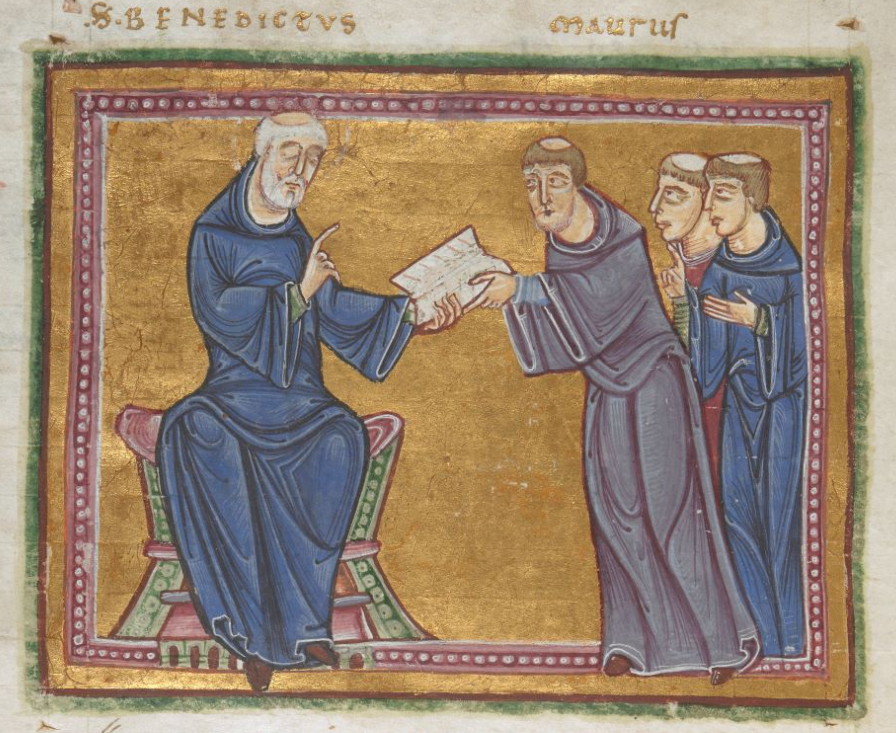Historical Context
The Late 10th Century

Ælfric (c. 955–1010) was a key figure in the English literary revival and reform at the end of the 10th century. Following the Danish raids on England throughout the 9th century, political and religious leaders alike sought a level of reunification and stability for the people on the island. Monastic life in particular had been disrupted by the Danish invaders, and several reformers desired to re-institute the ascetic, abstinent Rule of St. Benedict as the expectation for English monks.
King Alfred the Great (c. 848–899) had secured southern England from the Danish invaders by the mid-890s and became a precursor for the restoration of the English Church (cf. Alfred’s translations mentioned in Ælfric’s Preface 1). In the subsequent decades of relative peace, the English bishops Dunstan, Oswald, and Æthelwold initiated their monastic reforms. While the Benedictine monks of old had been beholden to strict vows of religious life, Æthelwold found the secular priests (not associated with particular vows) to be “given to gluttony and drunkenness”.[1] Backed by King Edgar (c. 944–975) and Dunstan, Æthelwold commanded those who refused to take monastic vows to leave. This Benedictine Reform, which began in Winchester, spread across the island.
The reformers were not, however, interested only in a stricter monastic lifestyle. The efforts of Æthelwold and others allowed art, literature, and learning to flourish again in England, despite the looming threat of the Danes. Monks living in monasteries dedicated themselves to reading and writing, and many of them demonstrated a keen interest in educating the regular lay people who lived near them.[2] Yet England was haunted by the Danes, and constant anxiety underpinned much of the literature of the 10th century. English priests and monks wanted to prepare the people for what they understood as the end of the world. Many of these fears proved to be well-founded, as Danish raids began again in the final years of the 10th century.
Shaped by a reinvigorated literary period as a result of the Benedictine Reform and by the near-apocalyptic fears caused by ongoing Danish invasions, Ælfric became one of the most prolific early English writers. His homilies in particular reveal his talent for teaching, translating, and interpreting for lay and religious audiences alike.
Ælfric's Life

Most of the details concerning Ælfric’s life are lost, but there are certain key dates that can allow us to sketch out a basic picture.[3] We know that in 987, the ealdorman Æthelmær requested that the Bishop Ælfeah send Ælfric to the newly-founded Benedictine abbey at Cerne in the very south of England (present-day Cerne Abbas, Dorset). Ælfric must have been at least 30 at this time, because he was sent to Cerne as both a monk and a masspriest, and priestly ordination customarily happened at that age. Assuming even only a brief probationary period before he was sent to Cerne, this means that we can approximate Ælfric's birth to about 955, solidly in the middle of the 10th century.
Ælfric himself tells us that he spent many years at Æthelwold’s school at Winchester, and since we know that Æthelwold died in 984, it’s safe to assume that Ælfric entered that monastic schooling sometime in the 970s.
After his first years at Cerne, Ælfric got it in his mind to write two series of Catholic Homilies (and perhaps he was specifically asked to by his benefactor Æthelmær, the founder of the abbey). The first was written in 989, followed quickly by the second in 992. The order of the homilies, which are arranged according the feast days throughout the Church’s liturgical calendar, support this timeline; the dates for each of the feasts which Ælfric lists align with those feastdates in the respective years.
Ælfric remained a priest at Cerne until he was appointed as the abbot of the monastery at Eynsham in 1005. There he remained until his death in about 1010. Ælfric's work over the course of his lifetime has caused historians to assign him many titles, but perhaps his most important (and maybe the one he'd have liked best) is Ælfric the Homilist.
Notes
-
James Hurt, Ælfric, p. 20. ^
-
Ibid, p. 21. ^
-
Joyce Hill, "Ælfric: His Life and Works," A Companion to Ælfric, pp. 35–65. ^